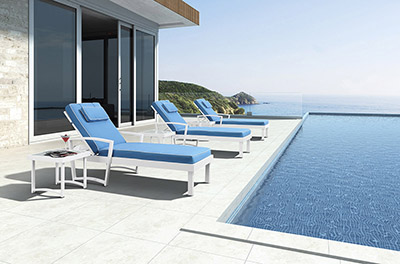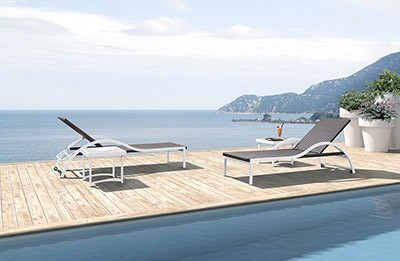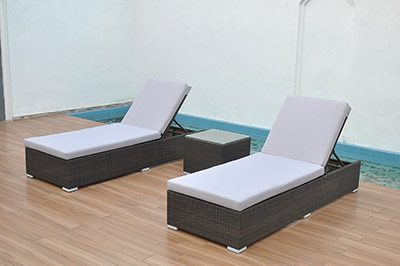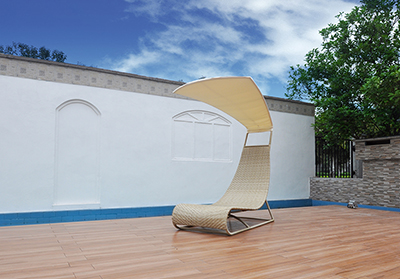(A) drum installation
The drum loading should be smooth, the conductivity should be better, and the shaft end seal should be better. No liquid flow is allowed. Use 1 ~ 2m of wire wound around both sides of the assembled drum, so that the drum can be chamfered on both sides without burrs.
(b) Cleaning
Before plating, the roller must first be cleaned. If there is oil on the roller surface, the nickel plating layer is not sticky or peeling. Proceed as follows.
(1) Use special metal cleaners to remove oil and other debris. Most companies now use the “Yinhu Metal Cleaner†produced by Yinhu Chemical Factory in Yuncheng City. It is made of surfactants and other highly efficient washing raw materials. It has good degreasing effect, strong washing power, antisepsis, and rust prevention. Good performance. When used, the cleansing lotion is formulated into a 2% to 5% aqueous solution, soaked and brushed at room temperature, and the heating effect is better. Normally use 600# water sandpaper to put on the detergent and evenly polish the roller.
(2) Rinse the plate roller and protective sleeve with clean water. When plating the small plate, the joint must be cleaned, and then use 3% to 5% of dilute sulfuric acid (H2SO4) active surface.
(3) Rinse the plate roller and protective sleeve with distilled water. The standard of cleanliness is not to suspend water droplets on the layout, and it is completely saturated with water. Unclean cleaning can cause nickel plating to blister and peel off. After cleaning, it can be placed in a nickel plating bath for electroplating.
(III) Nickel plating
Nickel is one of the iron group metals, and its plating solution has a large cathodic polarization and an anodic polarization in the electroplating process, and a fine and dense nickel plating layer can be obtained without adding a complexing agent.
The purpose of nickel plating is mainly to prevent iron from displacing copper (the solution is nickel sulfate) so that the copper layer can be firmly bonded to the roller core. Because in the case of no current flow, the displacement reaction occurs when the iron core of the plate cylinder comes into contact with the acidic copper plating solution, and this layer of copper is a chemical reaction that replaces copper and is not firmly bonded to the iron core. Therefore, the cleaned drum cannot be directly put into the acid copper plating bath for electroplating, but must be plated with nickel and then copper-plated.
1. The main component of the nickel plating solution
(1) The content of nickel sulfate (NiSO4·7H2O) in the bath is, in some cases, 180 to 220 g/L, and some companies are set to be 250 to 320 g/L. If the content of nickel sulfate is about 300g/L, the color of the coating is uniform, and the higher current density is allowed, and the deposition speed is fast.
(2) The content of nickel chloride (NiCl2·6H2O) in the bath is, in some companies, 30 to 50 g/L, some 55 to 60 g/L, and another 40 to 50 g/L.
Nickel chloride is an anode activator. On the one hand, chloride ions can activate the anode. On the other hand, nickel ions can supplement the nickel ion concentration in the solution. Both are active ingredients.
(3) Boric acid (H3BO3) is a buffer that frees hydrogen ions (H+) and borate (H2BO32-). Its content in the bath, some company specifications for 40 ~ 55g / L, some 35 ~ 50g / L, and some 30 ~ 45g / L. Boric acid has the effect of stabilizing the pH in the nickel plating solution. In the nickel plating process, the pH of the bath must be kept within a certain range. The actual specification in production is generally 4.0 to 4.6, and the constant is 4.2. If the pH is too low, H+ tends to discharge, reducing the current efficiency of nickel plating, and the pinholes tend to be generated in the plating. When the pH is too high, the plating solution is turbid, and the metal ions around the cathode are trapped in the plating layer in the form of metal hydroxides. The mechanical properties of the coating are degraded and the appearance is rough. Therefore, the pH must be strictly controlled during production.
Boric acid not only has the effect of stabilizing the pH, but also crystallizes the coating and makes it harder to scorch. When using a high current density, a bath with a high boric acid content (40 g/L) should be used.
2. Preparation of plating solution
According to the volume to calculate the amount of chemicals required, respectively dissolved with hot water, mixed in a container, diluted with distilled water to the required volume, set aside for clarification, the plating solution was introduced into the plating tank by filtration, and then added dissolved Sodium dodecyl sulfate solution, stirring evenly, sampling analysis, after qualified test plating, can be used for production.
3. Process conditions
(1) Temperature of nickel bath
The nickel bath temperature is generally controlled at 40 °C ± 1 °C. Raising the temperature of the bath can increase the solubility and conductivity of the salts in the bath, accelerate the diffusion of nickel ions to the cathode, reduce the internal stress of the deposit, make the coating flexible and ductile, and also enable the use of higher cathodes. Current density accelerates deposition and increases anode and cathode current efficiency. However, when the temperature is increased, the evaporation amount of the plating solution increases, and the nickel salt is also easily hydrolyzed to form a nickel hydroxide precipitate. Particularly, after the iron impurity in the plating solution is hydrolyzed, precipitation of ferric hydroxide occurs, which increases pinholes and burrs in the plating layer. Therefore, the use of high temperature, high current density bath, the amount of boric acid should be increased.
(2) Cathode current density
In the nickel plating process, the cathode current density is closely related to temperature, nickel ion concentration, pH value and agitation degree. In general, the bath concentration is higher, the pH is lower, and higher cathode current densities are allowed with warming and stirring. In the case of low temperature and bath concentration, only a small cathode current density can be used. In actual production, the plating current density is 3 to 4 A/dm2.
(3) Baume (Be°)
For Baume degrees, some company specifications are 17 to 20, and some are 20 to 22. Note that high Baume is easy to get rid of, and it should be strictly controlled in the best range in actual production.
(4) Plating time
Plating time is generally 15 to 20 minutes.
(5) Anodes in Nickel Plating Baths
The anode in the nickel plating bath is an electrolytic nickel plate.
4. Process maintenance
(1) Do the exact ratio of the solution, and make appropriate adjustments to the solution according to different equipment. If the active ingredient content of the solution is low, the current will be too low. Therefore, check the pH and the Be° value every day, what is missing. Records should be made when the class is exchanged. The liquid level should be sufficient and the pH value should meet the standard (not less than 3.8). Each week, the nickel plating solution is tested twice.
(2) Nickel cylinders should be equipped with a filter pump to filter the nickel solution to ensure it is clean and clean.
(3) Some companies such as nickel sulphate and other components are relatively high, so that the new solution will easily cause the plating drum, so the bath should be slightly thin. After finishing the nickel plating, use 1000# fine sandpaper to make it smooth. Never touch the fingerprint.
(4) After nickel plating, it must be rinsed with purified water. If it is rinsed with water, it will affect the bonding of nickel and copper due to poor water quality.
(5) Zinc and iron are the biggest hazards of nickel plating. Therefore, copper liquid must never enter the nickel plating tank during lifting.
(6) Prohibit long-term plating (not more than 40 minutes) after nickel plating, and use water to prevent nickel from deactivating in the air.
(7) When it is found that there are many pinholes in the nickel plating layer, the anti-pinhole agent hydrogen peroxide may be used. Dilute 30% hydrogen peroxide solution to 1 to 3 ml/L, slowly pour into the plating solution, and continue stirring to remove impurities from the plating solution. Afterwards, the bath must be filtered.
5. Quality standard of nickel plating
(1) The single-sided thickness of the nickel layer is 8 to 10 μm.
(2) The nickel layer is a yellowish full-cover coating and does not allow defects such as burrs.
(to be continued)
Outdoor Beach Chair brings you a wonderful lounge time at seaside or poolside.The materials synthetic PE rattan,aluminium frame and waterproof cushion are resistant to difference weather conditions and easy to maintain.
Outdoor Beach Chair is crafted from rattan wicker weaved into an aluminium frame. This combination help make this chair durable and comfortable all at once. The adjustable backrest allows you to adjust to different positions so that you can relax on the patio or by the pool.
Features
· For outdoor and indoor use
· High quality rattan plait
· Suitable to all weather conditions
· Easy to maintain
· Matches any outdoor decor
· Quick to assemble
· Adjustable backrest
Maintenance tips
· Do not use any abrasive cleaning agents for cleaning
· Clean the chaise lounge with a damp, soft cloth (you may use a mild cleaning agent) and wipe it dry afterwards
· In case of ceaseless heavy rain or during the winter, the furniture should be stored inside or have a protective cover on it
Outdoor Beach Chair is ranged in different style: Rattan Chair,Sing Mesh Chair,Aluminium Powder Coat Chair.Single and double chairs are available for option.




If you have any questions, please contact with us directly. Outdoor Sofa Furniture are produced
by Golden Eagle Outdoor Furniture With High Quality and Good Appearance. Welcome you can visit our Factory.For any inquiry,Please send mail directly to us.
Rattan Beach Chair,Sun Lounger Beach Chair,Pool Beach Chair,Chaise Lounger Beach Chair
Golden Eagle Outdoor Furniture Co., LTD. , https://www.gegardenfurnitures.com